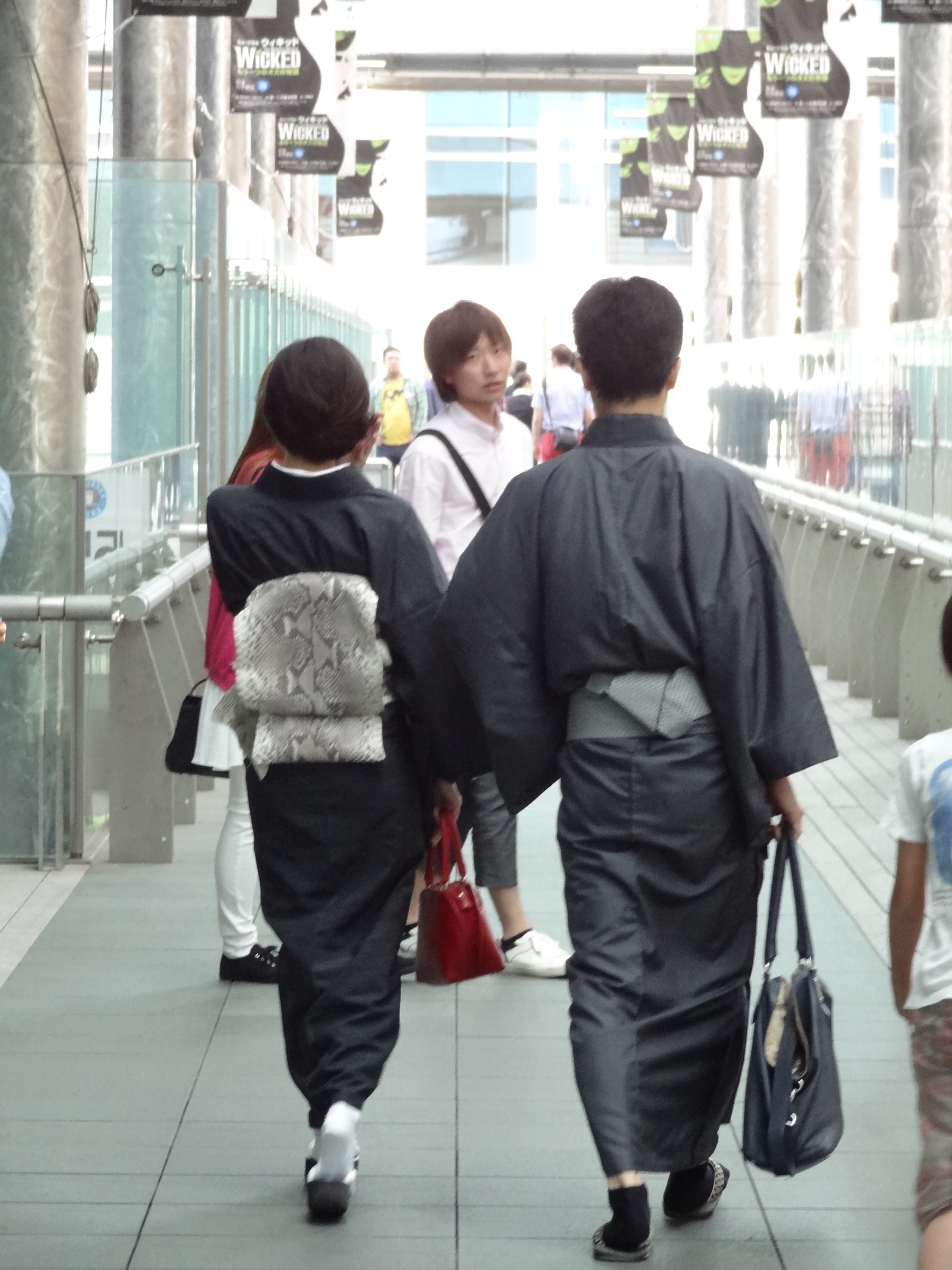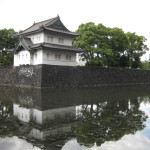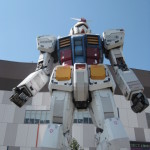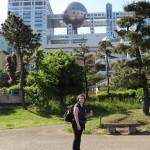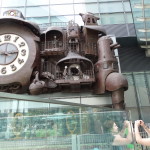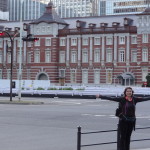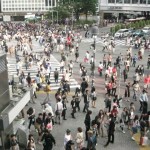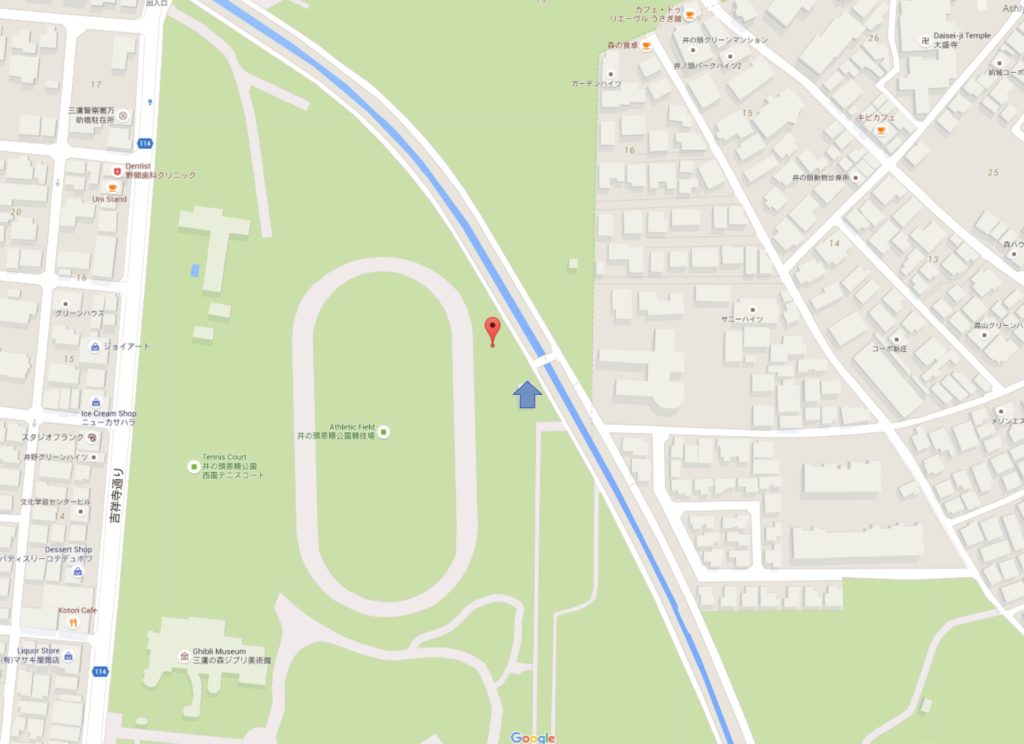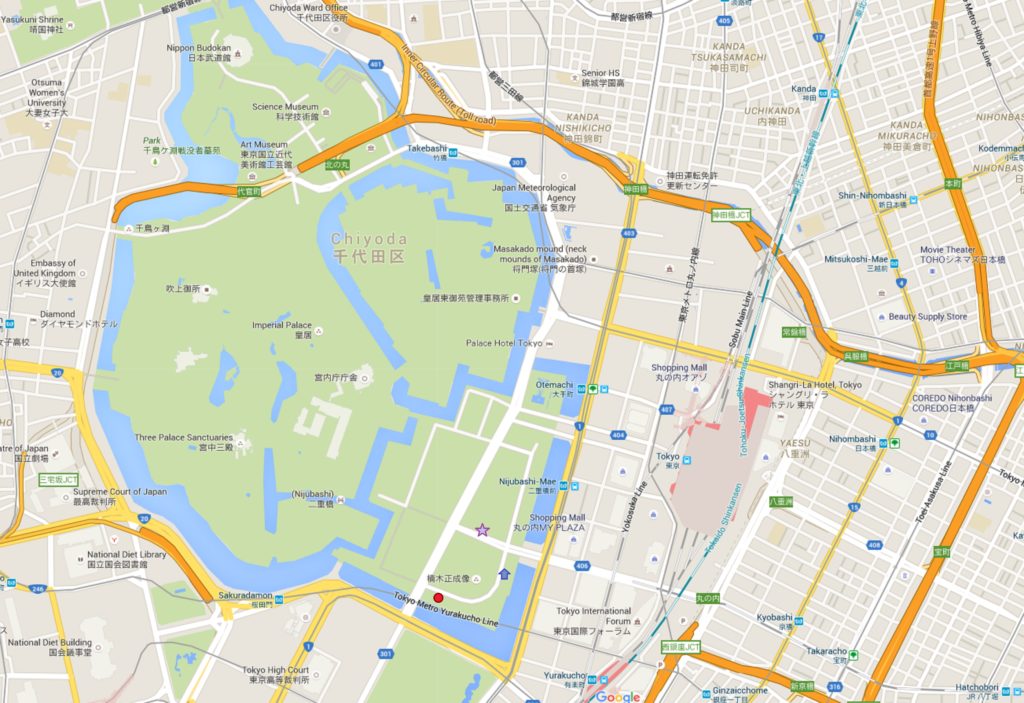Events and happenings are aplenty, especially Tokyo Attractions. Below are some hints and tips about where to stay, urban camp, save money, and visit in and around Tokyo.
Saving Money in Tokyo
- Finding food
- After 5 pm many grocery chains will discount all of the prepared food. This means cheaper sushi, noodles, and rice in their “deli” section. You will be able to easily spot these discount stickers with 50% off or higher depending on how late it is. Grocery chains are normally located in basements of shopping centers and train/transit stations.
- Convenience Stores: we can’t all wait till after 5 pm to find affordable food, so convenience stores help with that. They have great, ready-made-food, which is delivered to every store three-times-a-day. Yep, you read that correctly 3 times a day. The attendants will even ask if you would like the food microwaved and provide chop-sticks or fork/spoon. We had amazing sushi, bento, noodles, ice cream, and drinks.
- Vending Machine restaurants: are few and far between but they will generally look like a normal restaurant, but instead of a menu, you can go up to a machine and select what food you want. If it’s a slow day, the attendant will even try to help you out. These are nice, because they tell you the prices and you pay up front. After receiving the tickets you take them to the cook and they will deliver the food to your table.
- Tip: no need to worry about budgeting tip into your food bills. In Japan it is actually very rude and dis-respectful if you leave a tip. The waiters are paid a living wage and do not survive off of tip, unlike some Western countries, so no need to feel guilty.
- Accommodation: addressed below.
- Transit
- Train/Subway: highly recommended as the trains are always on time and easy to use. The Tokyo network can be a little confusing in the beginning, but the main thing is to know where you are going, then find if one colored line (route) goes from the station you are in to the one you would like to arrive at, if so, follow that colored sign in the station to find the correct platform. If one route does not connect the two stations find out what station you would need to transfer at. If you get lost along the way ask a train/subway attendant.
- If you have the JR pass and would like to activate it during your time in Tokyo, fabulous, it covers all of the main routes throughout the city and should be covered for the most part
- I also bought a supplemental transit card, the PASMO, as it is good for all Tokyo transit and some further afield locations.
- You pay a small fee to get the initial card and then load additional yen onto the card. When entering a station you would insert the card into the stile, walk through, receive it on the other end, and once leaving your destination station you would swipe the card again, thus deducting the correct about of money. If the destination station does not allow you through, it can be because the card doesn’t work on that line or you don’t have enough funds. You could ask an attendant or go to a kiosk and load more money onto the card.
- You are only allowed to use per person, you cannot use one card for more than one individual.
- Walking: always the cheapest way to go and best way to see the city if the destinations are close together, but can become exhausting.
- Train/Subway: highly recommended as the trains are always on time and easy to use. The Tokyo network can be a little confusing in the beginning, but the main thing is to know where you are going, then find if one colored line (route) goes from the station you are in to the one you would like to arrive at, if so, follow that colored sign in the station to find the correct platform. If one route does not connect the two stations find out what station you would need to transfer at. If you get lost along the way ask a train/subway attendant.
Tokyo Attractions
- Ueno Zoo – The zoo is located in central Tokyo, easily accessible from the train station, and a great way to get accustomed to the city/culture. Entrance fee is about 700 yen (7 USD, depending on exchange rate) which is incredibly cheap for being able to see Gorillas, Giant Pandas, and so many more exotic animals.
- Odaiba Island (Gundam) – A mock statue from “Mobile Suit Gundam” stands 60 feet tall outside Diver City Tokyo (a mall complex with shopping, food, and entertainment) on Odaiba Island. The man-made island was originally created as a fortification, but slowly developed into an escape for Tokyo-ites to parks, recreation, and slower pace of life. The island is also headquarters to Fuji TV Station, featured in such shows as anime “Digimon”.
- Tokyo Station – Not necessary to take a trip specifically to this attraction because any travel about or around Japan will eventually transit through this station. The red brick facade is coherent with surrounding architecture. The real surprise is the shopping maze contained inside, while still providing around 4,000 train services daily, including the Shinkansen.
- Imperial Palace – although on most days you cannot enter the palace (only open twice a year: for the Emperor’s birthday on December 23rd and New Year’s Greeting on January 2nd) except on guided tour, you are still able to enter the East Garden.
- Shibuya Crossing – The busiest pedestrian crosswalk in the world, estimated to sometimes facilitate over 1,000 people crossing during a single light change. The crossing stops all motor traffic in order to provide transit to so many pedestrians. A great viewing spot of the crosswalk other than right down in the thick of it, is to purchase a cup of coffee at the Starbucks and head up to the second floor and grab a stool.
- Tsukiji Fish Market – I only list this attraction as so many others do, I did try to visit the market, but they no longer allow tourists into the main fish or fruit/vegetable market. I do not recommend this attraction as you will be sorely disappointed.
- Studio Ghibli Museum – Anime fans will be in love with this museum. The museum was designed by Studio Ghibli director, narrator, animator, and author Hayao Miyazaki. He has produced/directed such movies as Princess Mononoke, Spirited Away, and Ponyo. Situated in the outskirts of Tokyo, in a park in Mitaka prefecture, this museum features artwork, sculptures, displays on animation, and a ticket to a short movie only view-able at the museum (no need to no Japanese as there are no words).
Places to Stay
Although there are many places to stay, these are some of the cheapest and most memorable.
- A Ryokan is a traditional Japanese hotel. They are generally billed per tatami mat and have shared kitchen and bathrooms. In some cases they will also have a computer room and in many cases very helpful staff.
- We stayed twice at Kimi Ryokan for about 60 USD a night in Ikebukuro and would highly recommend this location. Kimi Ryokan also had a traditional Japanese bath that you could reserve which is nice for a good soak. Otherwise you can utilize either of the two showers which are kept in exceptional condition and are really clean. The Ryokan also has air conditioning in each room which reaches around 50 degrees Fahrenheit.
- Capsule Hotels are famous as a Japanese invention for the frequent business man that ends up working late and gets stuck in Tokyo overnight. The capsules are generally stacked 2 high, and when you make a reservation you can specify. Inside your 3 foot by 3 foot by 8 foot cube, you have a light, tv, radio, and shelf. There generally is a common area per floor where you can lock up you luggage and personal items. Also per floor is a bathroom for communal use. Expect that everyone will be awake at 7 or 8 am to be into work on time, they are not there for the experience. In some cases you will also a floor for lounging, restaurant, and laundry. ***In many cases they only allow men in their capsule cubicles, so research in advance; if they do allow women, they will have a seperate floor with a different code to gain access for security.
Urban Camping Options
Both of these options have been tested and we would highly recommend.
- On the left you will see Mitaka, Tokyo, which is a little further afield from Tokyo proper, but if you are a little skeptical of Urban Camping and/or new to Japan, this is a perfect place to test it out. The park is also contains the Studio Ghibli museum, which for all you anime fans out there, you know it is a MUST see attraction.
- The right hand map shows the Imperial Palace, which is centrally located. A block away from Tokyo Station and Shinkansen terminal, in Ueno prefecture. It has a police box, located at the purple star and is a very easy location to set-up for a night and then move on. We stayed at this location twice; our first Urban Camping experience and also for the last before leaving Japan, that’s how much we would recommend it. 🙂


